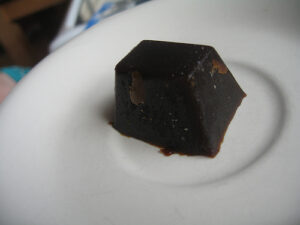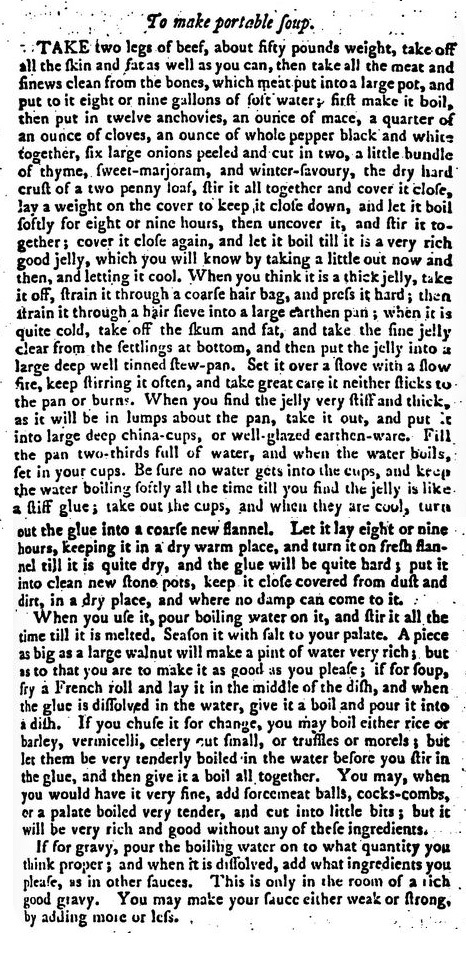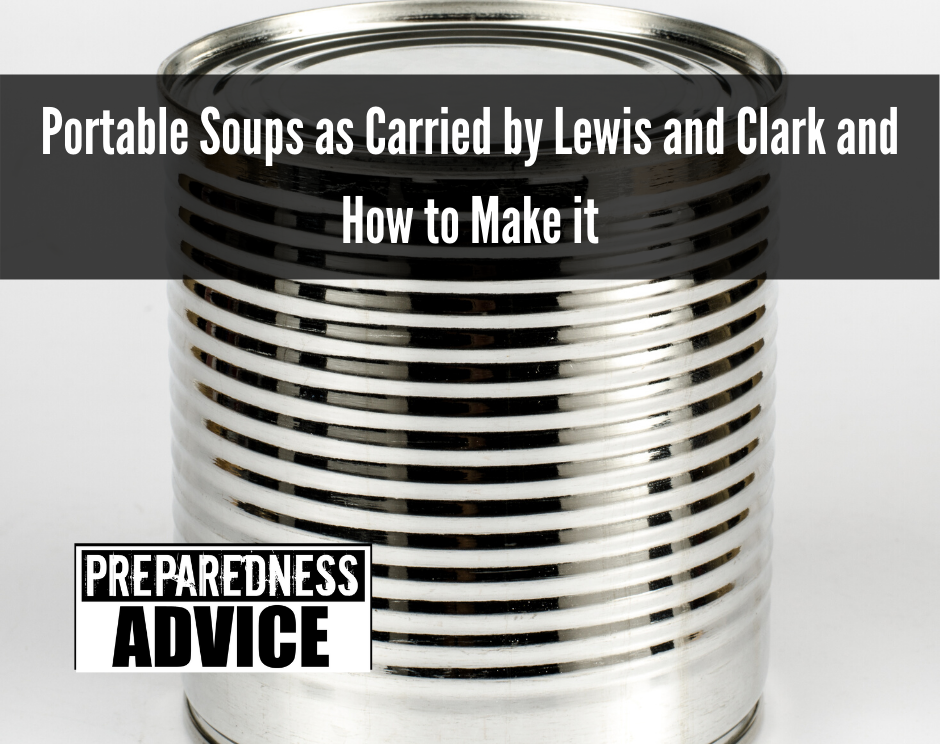Portable soup was a concentrate that made a dried stock similar to bouillon cubes. It was used in the 18th and 19th centuries and was also known as pocket soup or veal glew. It was used by explorers and sailors including the British Navy.

The Lewis and Clark expedition carried 193 pounds of portable soup, but it does not seem to have been very popular with the expedition members. Portable soup seems to date from around 1690 in both France and England.
Recipe for Portable Soup From 1747
As with many products from that time period, there seems to be a number of ways of making it. Hannah Glasse gives the following recipe for portable soup in her cookbook The Art of Cooking Made Plain and Easy published in 1747.

The above is the complete recipe from her book. It is easier to read if you know that the old S and F were very close in appearance. Here is the recipe simplified:
Recipe:
- Take two legs of beef and remove all the skin and fat as well as you can.
- Take all the fresh meat and sinews off the bones.
- Put the meat into a large pot with eight or nine gallons of soft water.
- Bring the water to a boil.
- Add 12 anchovies, 1 oz of mace, 1/4 ounce of cloves, 1 oz of whole black and white pepper, 6 large onions peeled and cut in two, a little bundle of thyme, sweet marjoram, and winter-savory, the dry hard crust of a two penny loaf.
- Stir and cover. You can use a very small weight to make sure the cover stays on.
- Boil softly for 8 to 9 hours.
- Uncover and stir.
- Cover and boil until it is a “very rich good jelly’
- Strain through a coarse hair bag, press hard.
- Strain through a fine sieve into a large pan.
- Let it cool and then remove the skum and fat.
- Take the jelly that is at the bottom and put it into a large deep well tinned stew pan.
- Put it on the stove under a low fire.
- Stir often so it doesn’t stick to the pan or burn.
- Once it is stiff and thick, put it into large deep china cups or well-glazed earthen-ware.
- Fill a pan two-thirds full of water and bring to a boil.
- Put the china cups or well-glazed earthen-ware into the water.
- Make sure no hot water gets into your dishes and keep the dishes in until the jelly is like a stiff glue.
- Take the dishes out and let them cool completely.
- Once cool, take the glue out and put it onto a coarse new flannel.
- Let it sit for 8 to 9 hours in a dry warm place.
- Turn it on fresh flannel until it is dry and the glue is hard.
- Put it in a dish to store and keep it covered from dust and dirt and stored in a dry place.
To use it:
- Pour boiling water on it and stir to make the glue melt.
- Season it with salt to taste.
There is information showing that at times other ingredients such as eggs and assorted vegetables were included in the recipes. Some sources state that 10 gallons of stock produced a small brown rubbery slab about 6 by 12 by 1 inch, with an intense meaty taste.
English Recipe for Portable Soup From 1861:
INGREDIENTS:
- 2 knuckles of veal
- 3 shins of beef
- 1 large faggot of herbs
- 2 bay-leaves
- 2 heads of celery
- 3 onions
- 3 carrots
- 2 blades of mace
- 6 cloves
- a teaspoonful of salt
- sufficient water to cover all the ingredients
Directions:
- Take the marrow from the bones; put all the ingredients in a stock-pot, and simmer slowly for 12 hours, or more, if the meat be not done to rags; strain it off, and put it in a very cool place; take off all the fat, reduce the liquor in a shallow pan, by setting it over a sharp fire, but be particular that it does not burn; boil it fast and uncovered for 8 hours, and keep it stirred.
- Put it into a deep dish, and set it by for a day.
- Have ready a stewpan of boiling water, place the dish in it, and keep it boiling; stir occasionally, and when the soup is thick and ropy, it is done.
- Form it into little cakes by pouring a small quantity on to the bottom of cups or basins; when cold, turn them out on a flannel to dry.
- Keep them from the air in tin canisters.

As you can see, this is a time-consuming process, but it does produce a useful product that can be time-saving when you are in a hurry. This dehydrated food was also used for the sick because it was believed that it gave great nourishment.


I had no idea this type food was prepared back then. Probably, our dehydrated food is just as good, maybe better and safer. This was very interesting. Thanks.
sounds like the glue stick soup that I remember (dimly) from Swiss Family Robinson – the book, not the movie.
They called it glue soup because the dried product looked like the dried hide glues of the day. The soup was cooled from a liquid and the stringy result was wrapped around a stick as it solidified. I don’t know that the preparation for glue was any different.
Sounds like it would stick to your ribs. (humor)
If the economy has been recovering for the last six years, unemployment has declined from 10% to 5%, and Obama has educated millions of young people by doling out $500 billion of student loans, why has the percentage of 25 to 34 year olds living in their mommy’s basement increased by 50% in the last ten years, with the trend accelerating in the last two years?
There is the propaganda dished out by the government and their corporate media mouthpiece lackeys, and there is the truth. Young people were duped into taking on billions in student loan debt with the promise of good jobs at graduation. It was a lie. Now they are left enslaved in debt, working shit service jobs, with no prospects of ever owning a house, and living in mommy’s basement.
Young people are becoming a nation of basement dwellers.
Very astute observation! Vote for Trump…not crooked Hillary.
If Hillary is elected, we are headed for martial law, economic collapse and Sharia on the horizon.
Vote for soup.
JAS Townsend has hundreds of YouTubes dealing with life in the 1700’s, cooking, food preserving, earthen ovens, 13 seasons of DVD’s about cooking (I have the set), basically everything a re-enactor could want, and much that could be a needed, including how to make pocket soup and pemmican. Just type Townsend in the YouTube search. We’re making his earth oven with the addition of vermiculite to lighten it enough we can use a wood base with firebrick on the flat platform it’s built on & not need the massive, not movable brick and clay base.
Dusty, how did the clay oven with vermiculite turn out. I have my clay and was hoping to begin this fall.
Thanks,
Deb